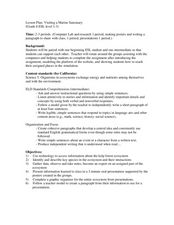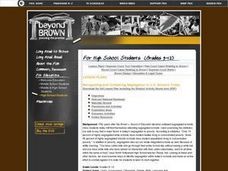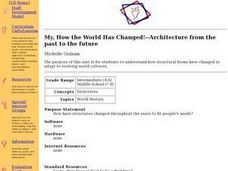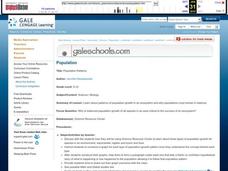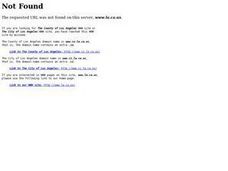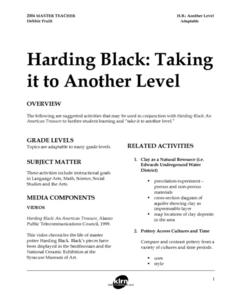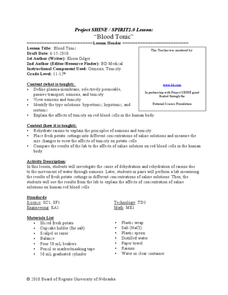Curated OER
Visiting a Marine Sanctuary
Students gather information on a kelp forest and identify species in that ecosystem. In this underwater ecosystem activity students gather data, give an oral presentation and create a poster.
Curated OER
Recognizing and Combating Segregation in U.S. Schools Today
Students explore the prevalence of racism and statistical segregation in America's schools. They design a project to investigate how the racial makeup of their school compares to other schools. In addition, they evaluate their design...
Curated OER
Spreadsheets in Science
Fourth graders create spreadsheets, explore patterns and make predictions based on the information. They select the appropriate graph to display the spreadsheet data. They search and sort prepared data bases to gain knowledge for...
Curated OER
My, How the World Has Changed!--Architecture from the past to the future
Learners explore how structural forms adapt to evolving world cultures. In groups, students examine posters from the past and write about the picture. Learners make predictions about what the picture will look like in the future....
Curated OER
Population Patterns
Students study patterns of population growth in an ecosystem and why populations must remain in balance. They interpret basic population graphs and suggest scenarios about different population growth patterns in an ecosystem.
Curated OER
The Oceans Below
Students investigate the geological characteristics of the ocean environment and create a labeled drawing of the ocean floor's geography. Students view videos and conduct Internet research about the ocean's floor and then create their...
Alabama Learning Exchange
Diverse Life Forms of the Ocean
Young scholars recognize marine organisms and differentiate between plankton and nekton. In this investigative instructional activity students create a concept map using their list of terms and study marine life forms.
Curated OER
You Can Find It!
Students locate different places including U.S. cities using longitude and latitude coordinates. In this longitude and latitude lesson plan, students locate 10 different locations.
Curated OER
Environmental Action
Students investigate an environmental problem in order to find and propose possible solutions. The problem is real to add to the engagement of the instructional activity. This is found through conducting research and then brainstorming...
Curated OER
Farm Animals
First graders use this Web Quest to find out about 6 different farm animals. They explore what each animal eats and what food humans get from each animal. They study about are pigs, sheep, goats, horses, cows, and chickens.
Curated OER
Travel Mug Design
Students create and develop a travel mug. They create visuals and a three dimensional infomercial. They apply an engineering design and demonstrate knowledge of thermodynamics involved in heat transfer. They illustrate Newton's Law of...
Curated OER
Family Fitness
Students visit sites that contain information about a variety of health and fitness activities. They analyze the activities according to several criteria, and describe how their particular activity choices can contribute to a healthy...
Curated OER
Raising a Healthy Child
Students identify key features in promoting their child's health. They create their own health and wellness plan for their Students.
Curated OER
Harding Black: Taking It To Another Level
Students complete a variety of activities related to the pottery of Harding Black and the uses of clay in San Antonio, Texas. They watch a video about the life of Harding Black, conduct a clay percolation experiment, compare and...
Curated OER
Tales From the Crypt
Eighth graders study the people of their community. In this Geography lesson, 8th graders research local history using maps and books. Students create a timeline of tombstones for deceased residents.
Curated OER
Blood Tonic
Learners investigate the process of osmosis using fresh potato cuttings in saline solution. In this biology lesson, students explain the difference between hypertonic, hypotonic, and isotonic solutions. They collect data from...


